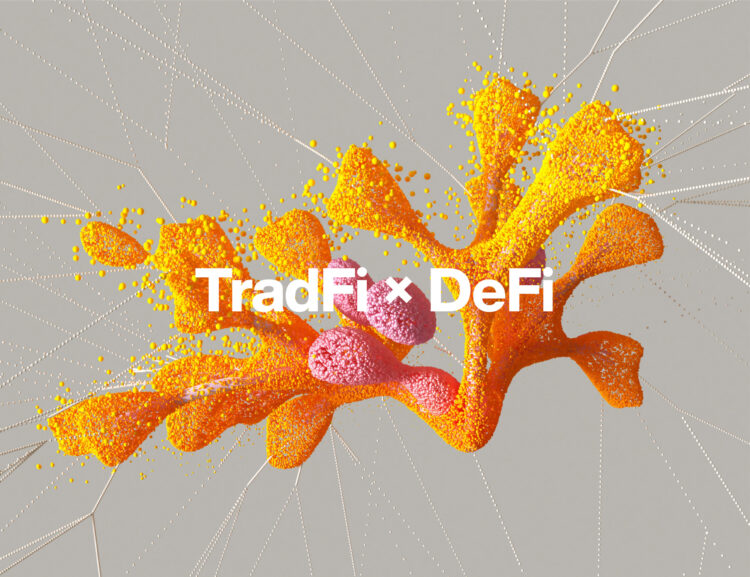Last updated on August 26th, 2025 at 09:50 am
Liquidity provision in Decentralized Finance (DeFi) is the backbone of Decentralized Exchanges (DEXs) and lending protocols. Simply put, it involves users, known as Liquidity Providers (LPs), depositing pairs of tokens (like ETH/USDC or SOL/USDT) into smart contract-based pools to facilitate trading or borrowing. In return, LPs earn a share of the fees generated by the protocol, plus additional rewards in some cases.
What sets DeFi apart is its dynamic reward structure. Top platforms like Uniswap, Curve, PancakeSwap, and Balancer offer varying Annual Percentage Yields (APYs) depending on market demand, trading volume, and incentive programs. For instance, some volatile token pairs or newer protocol pools may offer APYs exceeding 20–30%, while stablecoin pairs like USDC/DAI or USDT/FRAX may yield 5–10%, with lower risk.
As of 2025, you can find high DeFi yield opportunities on emerging L2 networks like Arbitrum and Base, where protocols like GMX, Aerodrome, and Pendle offer leveraged or fixed-yield staking options. However, these yields can be unpredictable and are influenced by token emissions, impermanent loss, and broader market sentiment.
Before diving into these pools, it’s critical to understand that while the APYs can be significantly higher than traditional finance (TradFi), the risks, both technical and market-based, are also elevated.
Overview of leading TradFi cash vehicles
Traditional finance offers several reliable, low-risk cash vehicles that have gained renewed interest amid high-interest rate environments. Chief among them are Treasury bills (T-bills) and money market funds, two instruments known for preserving capital while providing steady, predictable yields.
T-bills are short-term debt obligations issued by the U.S. government with maturities ranging from a few days to one year. Because they are backed by the full faith and credit of the U.S. government, T-bills are considered one of the safest investments available. They are typically sold at a discount and mature at face value, with yields in 2024–2025 hovering between 4.2% and 4.3%, depending on maturity period and prevailing interest rates.

Money Market Funds are mutual funds that invest in short-term, high-quality debt securities such as T-bills, commercial paper, and repurchase agreements. These funds aim to offer high liquidity and preserve capital while delivering modest returns. For instance, Vanguard’s taxable money market funds, including the Vanguard Cash Reserves Federal Money Market Fund (VMRXX), have been offering seven-day SEC yields around 4.2% and one-year returns close to 4.9% as of April 2025.

Other notable cash vehicles include high-yield savings accounts and certificates of deposit (CDs). While they may not always match the returns of T-bills or money market funds, they remain popular for their accessibility and low risk, especially when insured by entities like the Federal Deposit Insurance Corporation (FDIC).
In contrast to DeFi, the predictability, regulation, and security of TradFi cash instruments make them attractive to risk-averse investors, particularly in uncertain macroeconomic conditions. However, these vehicles typically do not offer the same level of returns or innovation flexibility seen in decentralized ecosystems.
Comparison between DeFi High-yield pairs and TradFi cash vehicles
Feature | DeFi High-Yield Pairs | TradFi Cash Vehicles (T-Bills, Money Market Funds) |
| Typical Yield (2025) | 5% – 30%+ APY (varies by protocol and token pair) | 4% – 5% (U.S.); up to 25% (Nigeria) |
| Volatility & Risk | High – affected by token volatility, smart contract exploits | Low – backed by government or investment-grade instruments |
| Lockup Periods | Ranges from none to several weeks (depending on platform) | Short-term maturities; usually liquid daily or weekly |
| Regulatory Clarity | Low – evolving and inconsistent globally | High – governed by established financial regulations |
| Accessibility | Global, permissionless with internet access & crypto wallet | Requires banking infrastructure or broker access |
| Minimum Investment | Very low (often <$10 equivalent) | Varies – can be higher depending on institution |
| Custody Risk | User responsible for private keys; risk of loss if mishandled | Typically managed by banks or licensed asset managers |
| Transparency | High – on-chain data, real-time analytics | Moderate – periodic disclosures and fund statements |
| Inflation Hedge Potential | Moderate to high (if paired with strong assets like ETH, BTC) | Low – often lags behind inflation in real terms |
A side-by-side comparison of yields, risks, lockups, and accessibility
Here’s a clear side-by-side comparison of high DeFi yield pairs and traditional cash vehicles, breaking down their yields, risks, accessibility, and more. Regulatory clarity vs innovation risk: who holds the edge?
When it comes to regulatory clarity, TradFi holds a clear advantage. Financial instruments like Treasury bills and money market funds operate under well-established legal frameworks with consistent oversight from central banks and securities regulators.
Investors in these products benefit from protections such as FDIC insurance (in the U.S.), robust disclosure requirements, and recourse mechanisms in the event of fraud or institutional failure. This regulatory stability makes TradFi cash vehicles attractive to risk-averse investors, particularly institutions managing large capital pools.
In contrast, DeFi operates in a far murkier legal environment. While some jurisdictions like the EU, Hong Kong, and the UAE are beginning to craft frameworks that touch on decentralized protocols, many DeFi platforms still fall into grey areas.
The U.S., for instance, has taken a case-by-case enforcement approach, leaving developers and users exposed to sudden crackdowns or lawsuits. This lack of clarity limits institutional participation and can lead to protocol shutdowns or forced exits.
Yet, with that regulatory uncertainty comes the upside of innovation. DeFi is rapidly evolving, with new mechanisms like concentrated liquidity, real-world asset (RWA) tokenization, and intent-based trading pushing the boundaries of what’s possible in financial markets.
While TradFi is slow and heavily regulated, DeFi experiments openly, often delivering financial products at lower cost and higher speed. In this context, DeFi may not yet have the regulatory edge, but it holds the innovation edge, which could pay off handsomely if global regulation catches up and grants the space room to grow responsibly.
How macroeconomic factors impact both sides of the market
Macroeconomic factors play a significant role in shaping the performance of both TradFi and DeFi markets. While the dynamics differ between the two, they are ultimately intertwined through the broader economic environment, which influences investor behaviour, market liquidity, and the cost of capital.
Impact on DeFi:
DeFi markets are often highly sensitive to changes in broader economic conditions. Interest rates, for example, have a direct effect on DeFi yields. When central banks raise interest rates, traditional savings vehicles like T-bills or money market funds become more attractive. This potentially decreases DeFi liquidity as investors move capital into these safer, higher-yielding alternatives.
On the flip side, periods of low interest rates or monetary stimulus can create a favourable environment for DeFi, as liquidity in the traditional financial system becomes more expensive or scarce, leading investors to seek higher returns in DeFi markets.
In addition, inflationary pressures and macroeconomic instability tend to make decentralized assets like stablecoins or crypto-backed lending platforms more appealing. These assets can act as a hedge against inflation or currency depreciation, offering a way for individuals to preserve purchasing power in volatile environments.
On the other hand, the volatility of cryptocurrencies, which underpins much of DeFi, means that external economic shocks can have a disproportionate effect on prices, leading to market sell-offs or liquidity crises.
Impact on TradFi:
For traditional finance, macroeconomic factors are equally influential, but with more predictable and controlled outcomes. Central bank policy is a key factor, particularly when it comes to interest rates. As rates rise, cash vehicles like Treasury bills, CDs, and money market funds become more attractive because they offer higher returns with little risk.
On the downside, these higher rates can also dampen economic growth by making borrowing more expensive, which could stifle demand for loans and other credit-driven financial products, reducing the money supply in the economy.
Global events, such as trade disruptions, oil price shocks, or geopolitical tensions, can also have a significant impact on TradFi vehicles. In times of uncertainty, investors often flock to safe-haven assets like U.S. Treasuries, which benefit from their status as risk-free assets. However, these events can also lead to an economic slowdown or recession, which may drive down corporate earnings and affect the broader stock market.
How Both Sides Are Interconnected:
While DeFi and TradFi may seem to operate in separate domains, they are interconnected through factors like inflation expectations, investor risk sentiment, and liquidity flows. For instance, a sharp rise in inflation could push investors towards assets that offer a hedge, such as gold, real estate, or even DeFi products like tokenized RWAs. At the same time, TradFi assets such as Treasury bills may become more attractive due to the higher yields associated with rising interest rates.
Both sectors also face the same pressures from macroeconomic uncertainty, such as global economic slowdowns or market volatility. In times of crisis, investors often move capital out of riskier assets (like stocks or DeFi tokens) into safer, more liquid vehicles like money market funds or government-backed securities. However, the decentralized nature of DeFi offers an element of independence from traditional financial systems, which can be seen as a positive during periods of financial instability in centralized institutions.
What retail and institutional investors should consider
Retail and institutional investors face very different options when choosing between DeFi and traditional finance. For retail investors, DeFi offers exciting opportunities to earn high yields through liquidity provision and staking, but these come with significant risks, including smart contract vulnerabilities, impermanent loss, and token volatility. Additionally, navigating DeFi protocols often requires technical know-how and a strong grasp of wallet security, making education a key prerequisite before investing.
Institutional investors, on the other hand, typically prioritize compliance, liquidity, and capital preservation. While DeFi can offer attractive yields, the lack of regulatory clarity, due diligence standards, and custodial safeguards makes direct exposure challenging for many institutions. That said, some are cautiously entering the space via regulated DeFi products or partnerships with crypto-native firms that offer institutional-grade infrastructure.
Ultimately, both investor types should weigh risk tolerance, time horizon, and liquidity needs. While DeFi shines in innovation and potential upside, TradFi cash vehicles still offer superior security, regulatory protection, and stability. A balanced approach, using traditional assets for capital preservation and DeFi for higher-risk, higher-reward strategies, may offer the most effective strategy in today’s evolving financial ecosystem.
Disclaimer: This article is intended solely for informational purposes and should not be considered trading or investment advice. Nothing herein should be construed as financial, legal, or tax advice. Trading or investing in cryptocurrencies carries a considerable risk of financial loss. Always conduct due diligence.
If you would like to read more articles like this, visit DeFi Planet and follow us on Twitter, LinkedIn, Facebook, Instagram, and CoinMarketCap Community.
Take control of your crypto portfolio with MARKETS PRO, DeFi Planet’s suite of analytics tools.”





















